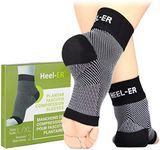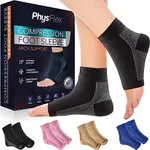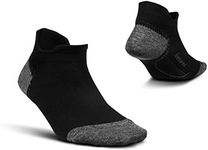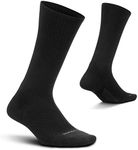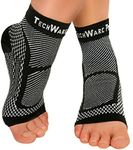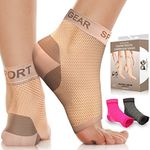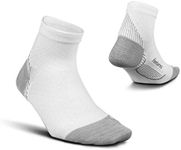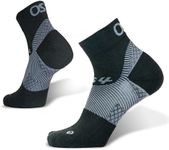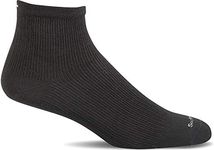Buying Guide for the Best Plantar Fasciitis Socks
Choosing the right socks for plantar fasciitis can make a big difference in your comfort and recovery. These socks are designed to provide support, reduce pain, and help with healing by applying gentle compression to your feet. When shopping for plantar fasciitis socks, it's important to understand the key features that affect their performance and how they relate to your specific needs. By focusing on the right specifications, you can find socks that help you stay active and comfortable throughout your day.Compression LevelCompression level refers to how tightly the socks squeeze your feet and ankles. This is important because the right amount of compression can help reduce swelling, improve blood flow, and provide support to the plantar fascia. Compression is usually measured in millimeters of mercury (mmHg), and socks can range from light (around 10-15 mmHg), moderate (15-20 mmHg), to firm (20-30 mmHg or more). Light compression is good for mild discomfort or daily wear, moderate is suitable for more noticeable pain or swelling, and firm is best for severe symptoms or for use during recovery from injury. To pick the right level, consider how much pain or swelling you have and whether you plan to wear the socks all day or just during activity.
MaterialThe material of plantar fasciitis socks affects comfort, breathability, and moisture control. Common materials include synthetic blends, cotton, and wool. Synthetic blends (like nylon, spandex, or polyester) are popular because they offer good stretch, durability, and moisture-wicking properties, which help keep your feet dry. Cotton is soft but can hold moisture, which may not be ideal if you sweat a lot. Wool is naturally breathable and can help regulate temperature, making it a good choice for colder climates. Choose a material that matches your comfort preferences and the conditions in which you'll wear the socks.
Arch SupportArch support refers to the extra structure or tighter weave in the sock's arch area, designed to support the plantar fascia and reduce strain. This is important because proper arch support can help relieve pain and prevent further injury. Some socks have targeted compression zones or built-in bands that hug the arch. If you have high arches or flat feet, look for socks with more pronounced arch support. If your arch is neutral, moderate support may be enough. Think about your foot shape and how much support you feel you need during your daily activities.
Fit and SizingFit and sizing are crucial for plantar fasciitis socks to work effectively. A sock that is too tight can restrict circulation, while one that is too loose won't provide enough support. Most brands offer size charts based on shoe size, so use these as a guide. If you are between sizes, consider whether you prefer a snug or slightly looser fit. Remember, the right fit should feel supportive but not uncomfortable, and the sock should stay in place without bunching or slipping.
CushioningCushioning refers to the amount of padding in the sock, especially in the heel and forefoot areas. This is important because extra cushioning can absorb shock and reduce pressure on sensitive areas, which is helpful if you spend a lot of time on your feet. Some socks are thin for a closer fit, while others have thicker padding for more comfort. If you walk or stand a lot, or if you have heel pain, look for socks with more cushioning. If you prefer a lighter, less bulky feel, choose a thinner sock.

